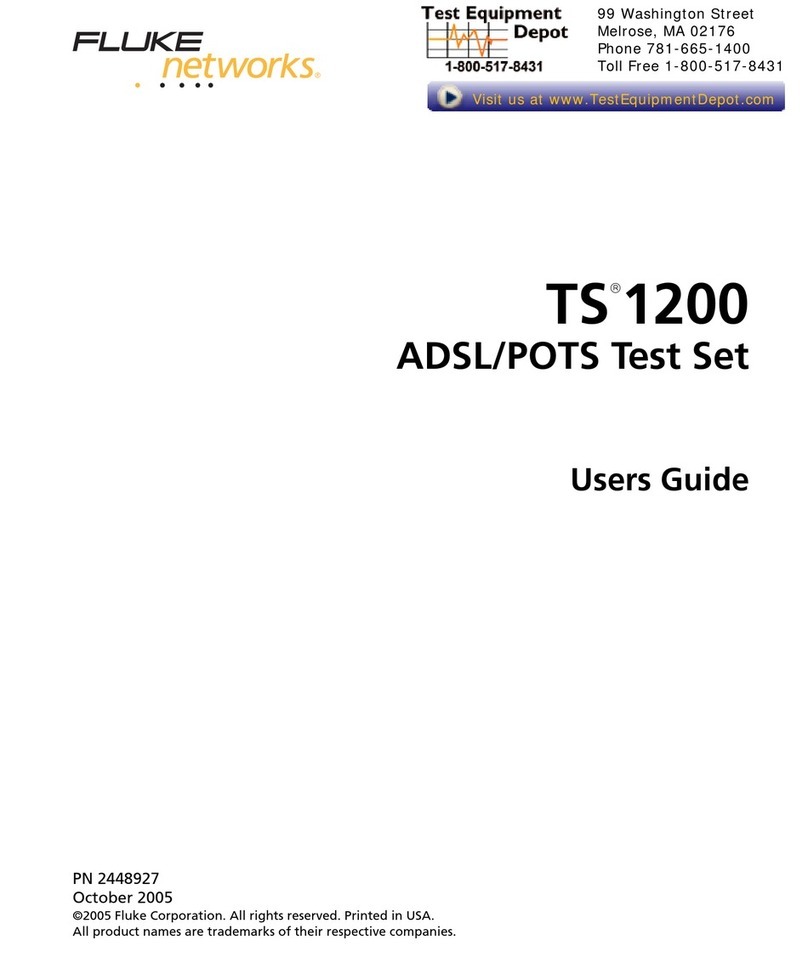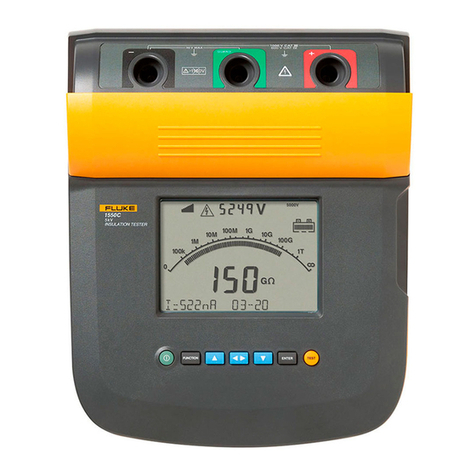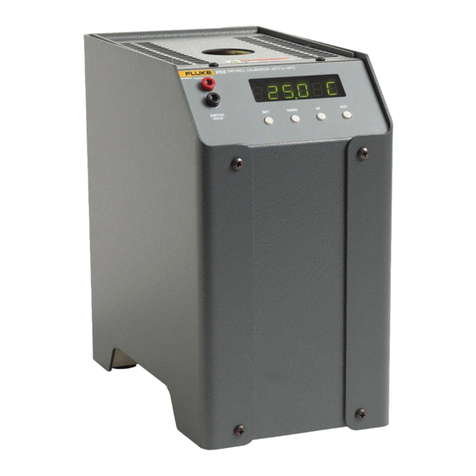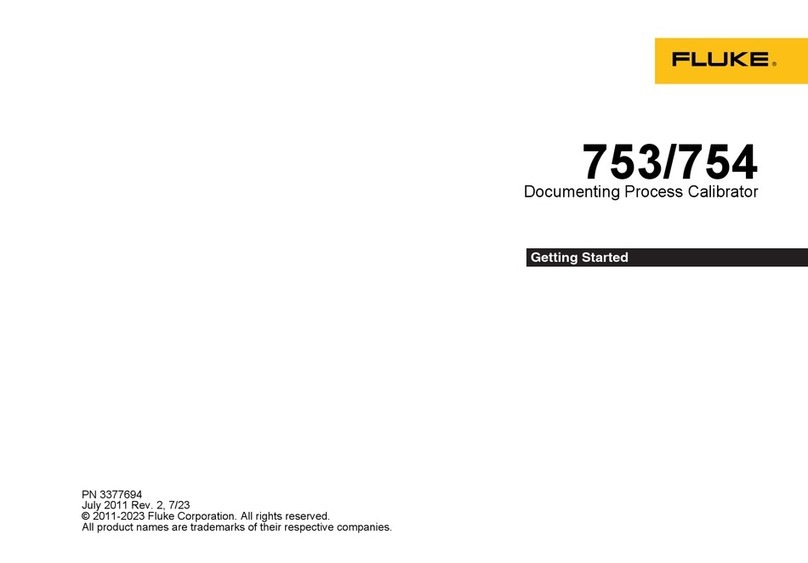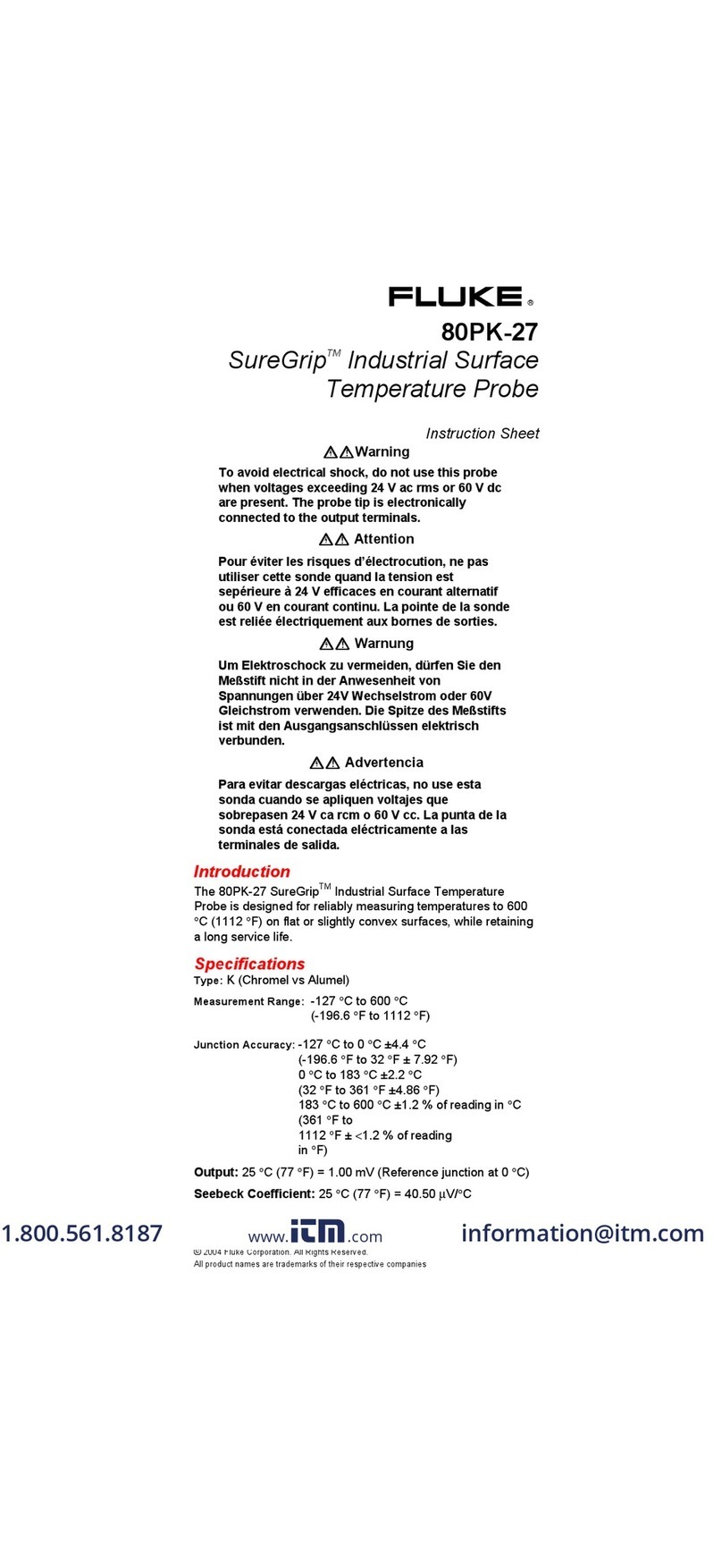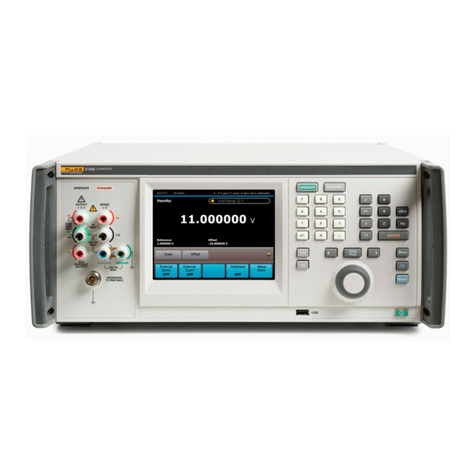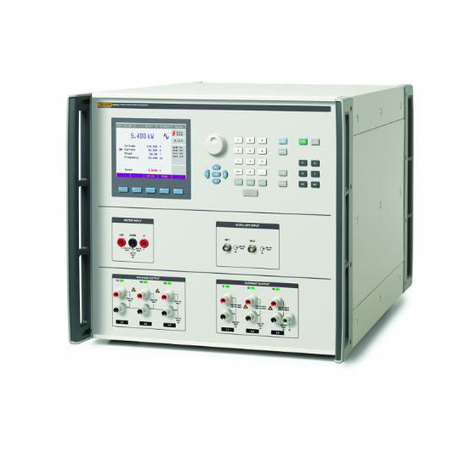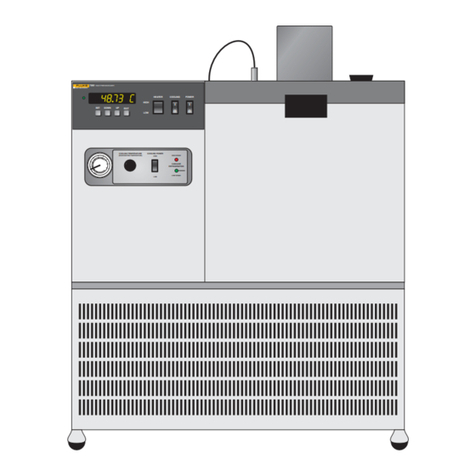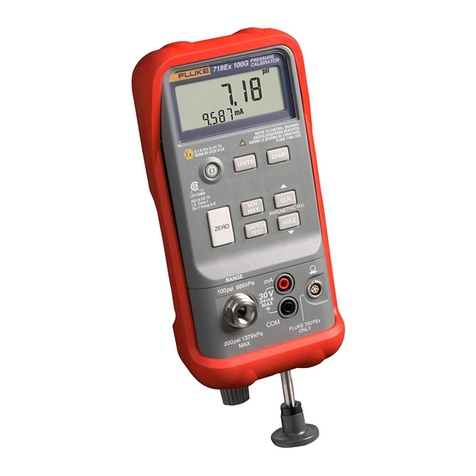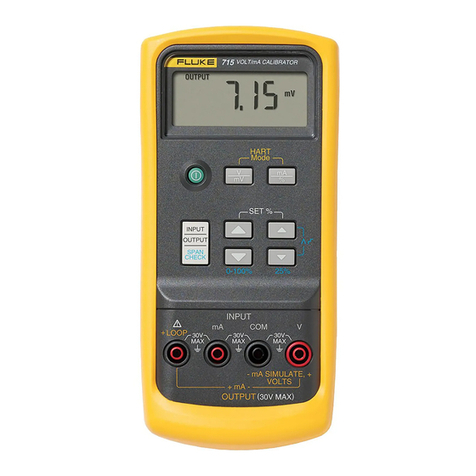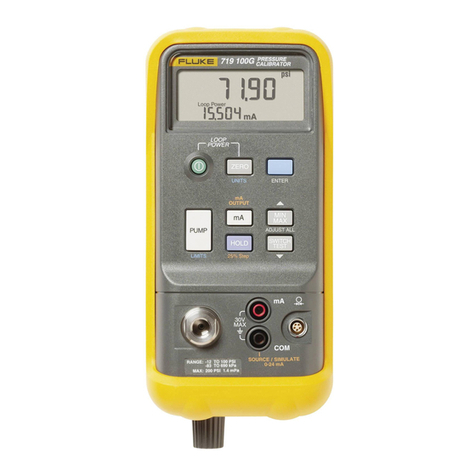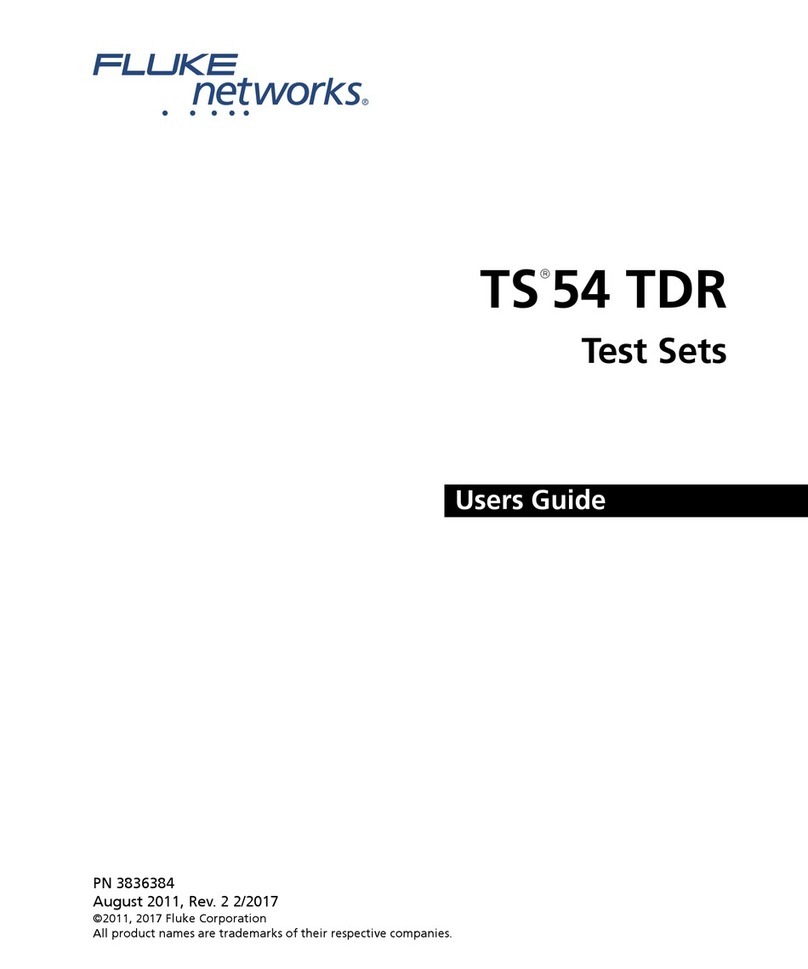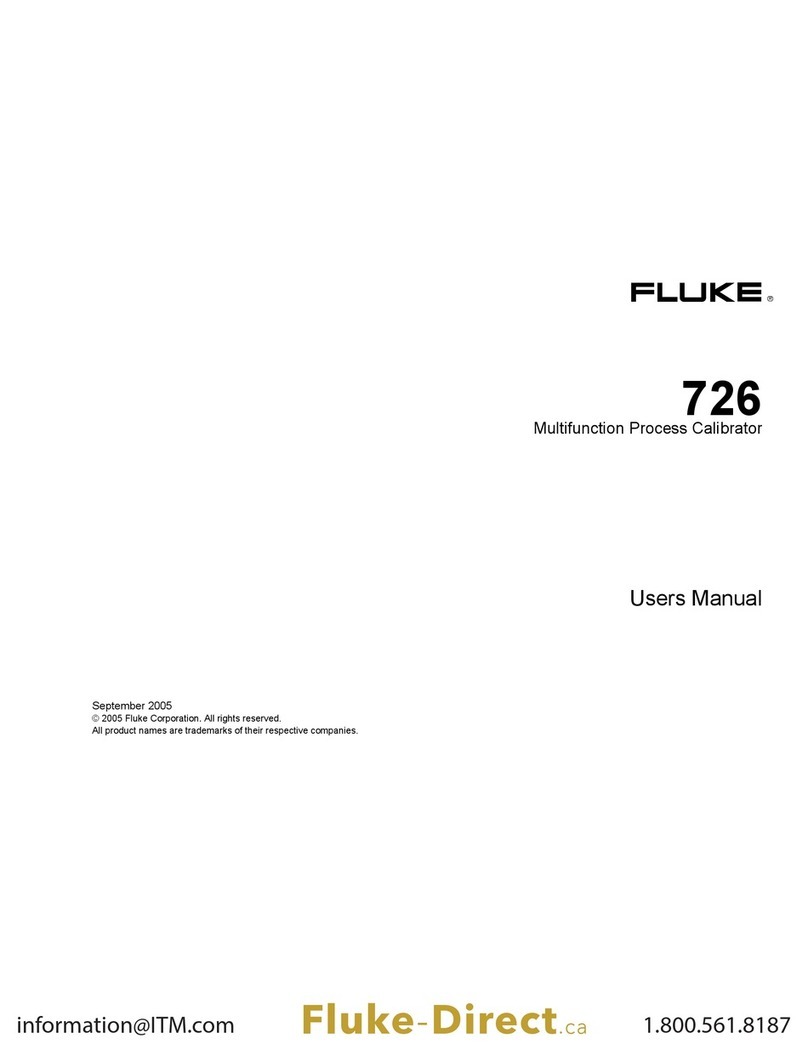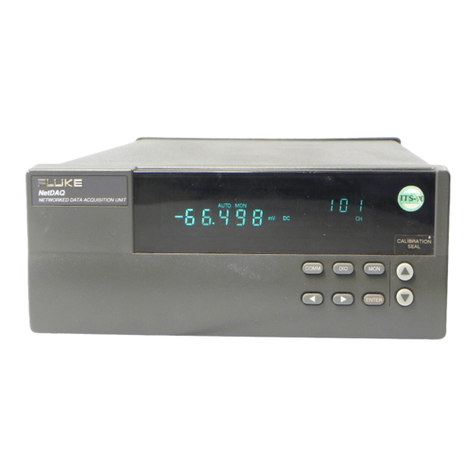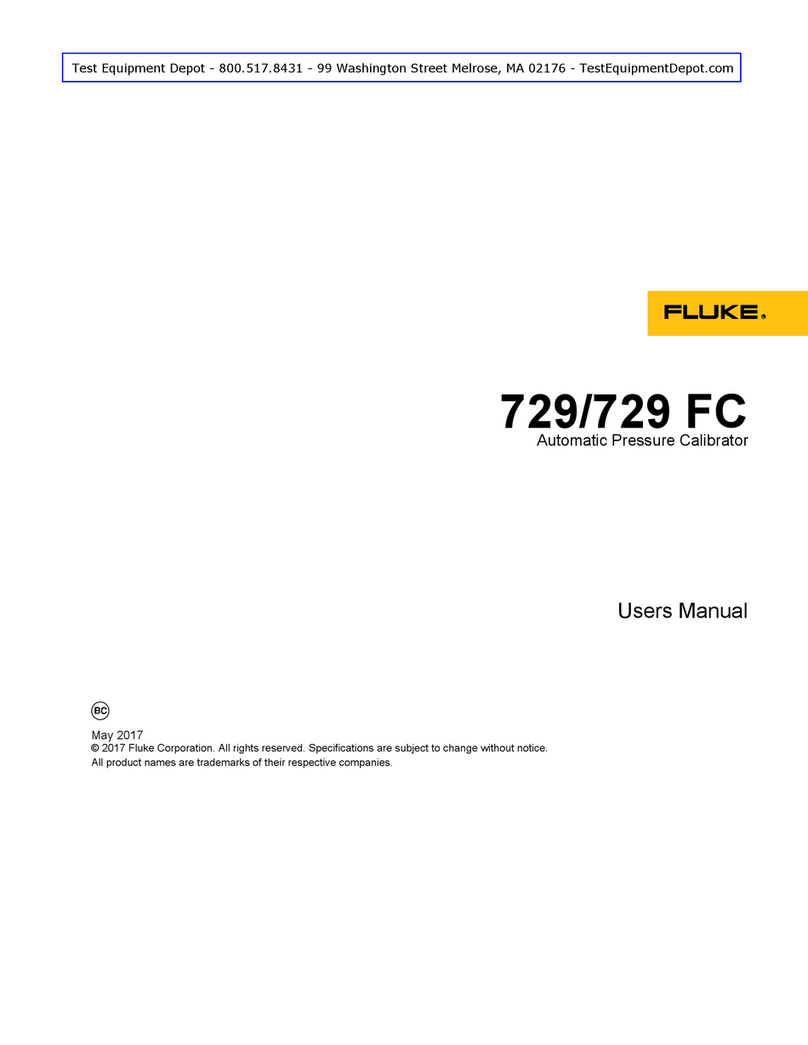2 Fluke Corporation Fluke 975 Air Meter: Environmental carbon dioxide analysis
Proper ventilation must be
maintained in occupied spaces,
but ventilation is not free. HVAC
equipment must be sized, not
only for the building load, but
the ventilation load as well.
Outside air used for ventila-
tion must be heated, humidified
and cleaned in the winter, and
cooled, dehumidified and cleaned
in the summer. A building may
not have maximum occupancy in
all spaces at all times. Since ven-
tilation rates are based on maxi-
mum occupancy, over-ventilation
will occur when spaces are not
at maximum occupancy. When
ventilation is more than required,
energy is wasted.
CO2monitoring and
demand controlled
ventilation
CO2can be used as a gauge for
determining the effective ven-
tilation rate of occupied spaces
and as a warning signal for
some processes that may have
gone wrong. It’s a predictable
indicator of occupancy. When
CO2monitoring is used to con-
trol building ventilation rate, it’s
called demand controlled venti-
lation (DCV).
The primary purpose of DCV
is to avoid over-ventilation and
thereby reduce energy costs
when spaces are not at full occu-
pancy. One or more CO2sensors
are used to control the position
of the ventilation air dampers
based on the CO2level within
the occupied space.
The maximum open position of
the outdoor air dampers is based
on the ventilation rate, as though
DCV were not being used. The
minimum open position during
the occupied period is normally
set at 20 % of the maximum rate
regardless of the CO2content of
the occupied space, however,
depending on the age and usage
of the building, this base ventila-
tion rate could be anywhere from
15 to 50 %. This minimum posi-
tion is required for basic build-
ing function ventilation, such as
materials off-gassing.
To qualify for DCV, a time
lag requirement must be met.
To meet it, proper CO2levels
must be achieved within a time
period, and that time period
depends on the total cfm/person
ventilation rate and the volume
of the space to be ventilated.
The data logging function of the
Fluke 975 AirMeter™test tool can
be used to ensure the time lag
conditions are being met.
The three most common DCV
control schemes are proportional
control, PI or PID control, or set-
point control. With proportional
control, the ventilation rate is
directly proportional to the rising
and falling indoor CO2level. PI
or PID (Proportional+Integral+De
rivative) control compensates or
compensates and anticipates for
rising and falling CO2levels by
accelerating the ventilation rate
according to the indoor CO2rate
of change.
For spaces that are typically
either empty or fill rapidly, like a
classroom, setpoint control goes
to maximum ventilation as soon
as an increase in CO2is sensed.
Since CO2can vary widely
depending on environment (300-
600 ppm), DCV target ventilation
rates are based on the differ-
ential between outdoors and
indoors. The outdoor air damper
“start open” setpoint should be
set at the minimum outdoor CO2
level unless CO2differential is
used. CO2differential uses an
outdoor CO2 sensor to compare
actual outdoor verses indoor CO2
levels for more accurate control.
Mysterious CO2
Fossil fuel burning appliances
such as stoves, ovens, furnaces,
boilers and water heaters pro-
duce high concentrations of
CO2during complete combus-
tion and are not always directly
coupled to a vent system. While
a properly ventilated occupied
space may have CO2levels of
1,500 ppm, the combustion
products of a fossil fuel burning
appliance has CO2levels ranging
from 70,000-120,000 ppm, with
30-70 ppm CO as well if the
appliance is clean and properly
set up.
Stoves and ovens may be
unvented in residential applica-
tions, or rely on exhaust hoods
in commercial applications to
vent the combustion products to
the outdoors. Improperly applied
kitchen exhaust systems can
ventilate the kitchen, but not the
appliance. This can be checked
by monitoring CO2levels in the
kitchen and adjoining spaces.
Until recent years, gas fur-
naces, boilers and water heaters
were decoupled from the vent
system (chimney) by a draft
hood. Vents that produced exces-
sive draft would ventilate the
equipment room, but not neces-
sarily the gas appliance because
of the “cold curtain” that was
created at the draft hood. The
result of this was flue products
spilling into the equipment room.
DCV differential target levels are based on the ventilation cfm requirement
per person. Combined with those figures, the 975 AirMeter™can be used
to determine whether the space is properly ventilated, over-ventilated, or
under-ventilated. And with that kind of information, technicians can venti-
late the space at the lowest possible heating and cooling cost.
10 cfm/person= 1,000 ppm CO2differential between indoors and outdoors
15 cfm/person= 700 ppm CO2differential between indoors and outdoors
20 cfm/person= 500 ppm CO2differential between indoors and outdoors
25 cfm/person= 420 ppm CO2differential between indoors and outdoors
30 cfm/person= 350 ppm CO2differential between indoors and outdoors

